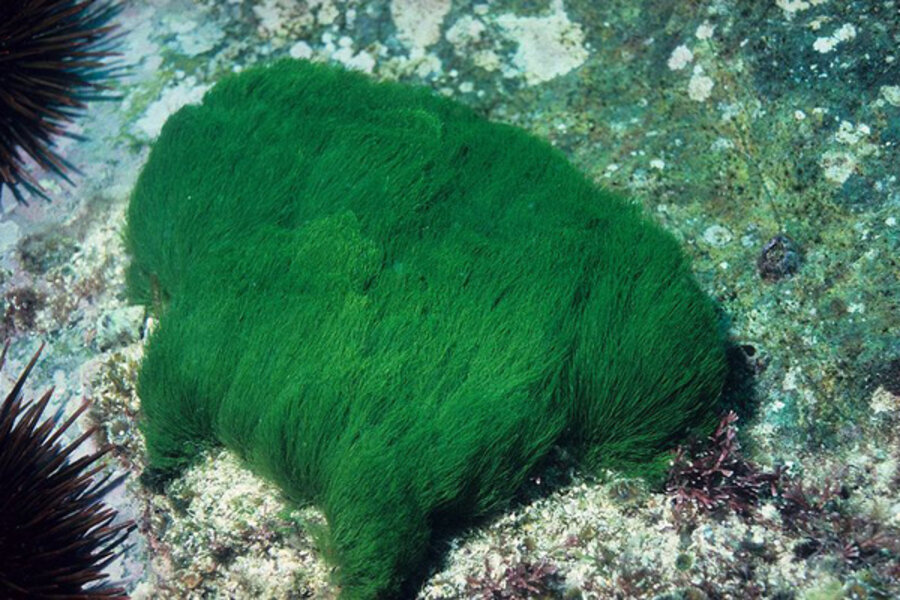Killer seaweed poisons vulnerable coral reefs
Loading...
Waving with the currents on the seafloor, a seaweed species that looks like tufts of bright-green grass is somewhat of an assassin, at least for nearby coral reefs, a new study suggests.
Its weapon of choice: natural chemicals.
The seaweed, called Chlorodesmis fastigiata, along with several common species of seaweeds in both the Pacific Ocean and the Caribbean, can kill corals upon contact by releasing deadly chemicals.
"Between 40 and 70 percent of the seaweeds we studied killed corals," said study researcher Mark Hay, a marine ecologist at Georgia Tech. "We don't know how significant this is compared to other problems affecting coral, but we know this is a growing problem. For reefs that have been battered by human use or overfishing, the presence of seaweeds may prevent natural recovery from happening at all."
Coral reefs are declining across the globe. Scientists had suspected the overgrowth of seaweed could be part of the cause, by crowding out the coral or somehow damaging it physically.
To find out, Hay and colleagues looked at two different coral species that were transplanted to the seafloor as part of a repopulation effort in the Caribbean and tropical Pacific. The corals were placed next to several different types of seaweed common around Fijian reefs in the Pacific and Panamanian reefs in the Caribbean.
To simulate shading and crowding effects, the researchers placed plastic plants next to some of the coral, while they kept some coral with no surrounding seaweeds.
In as little as two days, corals in contact with some seaweed species bleached and died in areas of direct contact. (Bleaching can occur when corals get stressed and expel the algae called zooxanthellae living in their tissues, resulting in a loss of the corals' vibrant colors.)
In other cases, the effects of the killer seaweed took 20 days in some cases and some seaweed species did no damage to corals during the 20-day period.
Overall, five of seven seaweeds caused bleaching in Panama, while three of eight species, including C. fastigiata, caused bleaching in Fiji.
The team also extracted chemicals from the seaweeds and applied them to corals. "In all cases where the coral had been harmed, the chemistry appeared to be responsible for it," Hay said.
Hay and co-researcher Douglas B. Rasher, also of Georgia Tech, aren't sure the purpose of these chemicals for the seaweeds.
"It may be that these compounds protect the seaweeds against microbial infection, or that they help compete with other seaweeds," Hay said. "But it's clear now that they also harm the corals, either by killing them or suppressing their growth."
The results are detailed this week in the early online edition of the journal Proceedings of the National Academy of Sciences.





